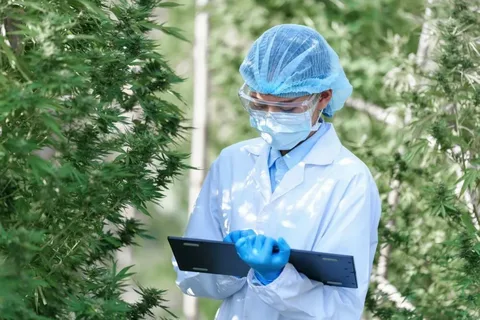Feet carry people places, and soft insoles carry feet. Most soft pads today use EVA foam, a plastic made from oil. It feels light like a marshmallow and springs back after each step. But oil foam stays on Earth long after shoes wear out, and that worry grows bigger each year. Now makers hunt greener stuff, and many fresh bio-foams begin to shine. This story walks through those choices, in words a child in first grade might read after snack time.
1. Why swap EVA at all?
EVA comes from fossil fuel, a very old liquid underground. Pulling that liquid out, heating it, and turning it into little pellets burns lots of energy. Smoke goes up, planet warms more. When the shoe is old, the EVA piece can not be easily melted for a new life. It mostly sits in a dump, maybe for hundreds of birthdays. So, looking for a kinder foam feels like good homework for shoe brands.
2. What “bio-based” truly means
Bio-based things start as plants, not oil. Corn, cane, castor bean, seaweed, and even tree cork can all change into tiny building blocks called polyols or polymers. Factories link the blocks like beads into bouncy foam. If at least half of the carbon atoms come from plants, many people call it bio-based. Some foams reach 80 % or more, which is huge progress, though still not perfect.
3. Main green foam families
- Sugarcane PEBA or PE-EVA mix
Sugarcane drinks the sun, grows fast, then gets pressed for juice. Leftover syrup changes into ethylene, a twin of oil ethylene. Blend it with vinyl acetate and you get cane-EVA that looks and behaves almost the same as the old stuff. Kids jumping on a playground will never feel the switch, but factories cut fossil fuel use by half. - Algae-blooms foam
Algae sometimes covers lakes like green paint. Collecting it clears the water and also gives biomass full of oils. Those oils transform into flexible foam. Color is natural olive, so makers often dye dark tones. The cushion is softer at first touch, good for yoga shoes or bedroom slippers. - Castor oil PU
Castor bean grows in dry places where food crops fail. From its thick oil, chemists build polyurethane that puffs into light pads. Rebound is strong, close to the sport shoe’s needs. Castor plants also suck CO₂ while growing, so the balance sheet looks nicer. - PLA with cork bits
Corn sugar turns into PLA plastic, which can foam but feels stiff alone. Grinding cork bark and mixing little pieces makes it springier. The mix smells woody and keeps warm, nice for winter insoles. - Mushroom mycelium sheets
Fungal roots weave into mats. Pressed and baked, they act like leather more than foam, yet under heel, they dampen small shocks. Fully home-compost in months if shredded, so the future looks bright here, though today’s volume is low.
4. How do they score on foot?
| Test work | Sugarcane mix | Algae foam | Castor PU | PLA + cork | Mushroom mat |
| Weight | light | light | light | mid-heavy | heavy side |
| Bounce | very springy | medium | high | low-med | low |
| Water soak | low | medium | low | low | medium |
| Heat form | easy | easy | careful | needs mold | gentle only |
The table shows that no single green foam wins every race. Choosing the right one is like picking crayons—it depends on the picture goal.
5. Stitching and lamination tricks
A bio-foam still needs to stick to fabric up top and maybe rubber down low. Using one-family glue helps with recycling later. For example, cane-EVA bonds with hot-melt made from the same cane source, so when the shoe ends its life, the whole sandwich can shred together without messy sorting. Some brands even sew the foam in place with polyester sewing machine thread and skip the glue drip, making less smell in the factory room.
6. End-of-life paths
- Mechanical grind – Cane-EVA crumbs can puff again into gym mat filler.
- Chem-recycle – Castor PU breaks back into oil-like soup for fresh foam feed.
- Compost or soil – PLA or mushroom pieces disappear under warm, wet dirt in a year or two, if nothing toxic is mixed in.
Important: each path loves clean streams. Mixing half oil foam and half bio foam can confuse recycling plants. So writing clear labels on the sock-liner or printing QR code helps the next owner know what to do.
7. Cost and scale bumps
Bio foams today cost a bit more / because farms, ferment tanks, and small batch lines still grow. Yield can wobble with weather, making supply tight in some months. But large sneaker makers signing long contracts makes factories brave to build bigger reactors, which slowly drops the price. A similar thing happened before with recycled polyester embroidery thread.
8. Little grammar twist: a thought
Some people say, “If bio materials still need energy, why bother?” The answer is steps, not leaps. Each percent away from fossil fuels is a brick in a safer road. And plant-based carbon was already in the air a short time ago, so the circle is shorter.
9. Quick start guide for product teams
- List foam jobs: thickness, hardness, temperature range.
- Shortlist two bio options that fit those jobs best.
- Order small slabs, cut, and run 30 000 flex test.
- Check smell and sweat soak with real runners.
- Pick a supply that offers a take-back plan or a recycling map.
Process looks long here, but many steps can happen same week with nimble labs.
Finish hop
Engineered insoles walk into the green era, swapping oil sponge for plant power. Sugarcane, algae, castor bean, corn, and mushroom—all join the roster. None are silver bullets, yet together they kick down old barriers in the comfort market. Next time you wiggle toes inside a new pair, peek under the sock liner. Maybe that pillow once waved in a field, or floated on a lake. Small change under your heel can grow big roots for the planet, one quiet step at a time.







